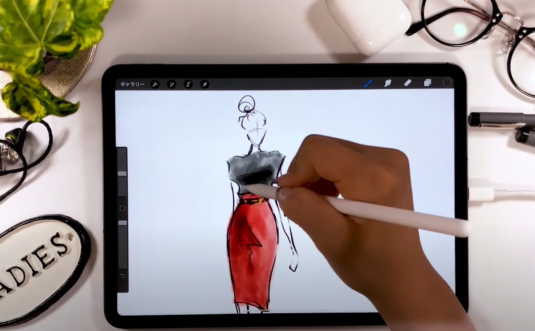In the fast-paced world of design, effective branding and marketing strategies are essential for establishing a strong presence and connecting with the target audience. In this article, we will explore the realm of fashion design branding and delve into proven techniques that can propel a trademark to success. From defining your business identity to crafting compelling business messaging, we will uncover the key elements that contribute to the growth and recognition of a successful trademark.
Defining Your Identity
Before diving into marketing strategies, it is crucial to establish a clear and distinct business identity. This involves defining your brand’s vision, mission, values, and TA. Take the time to understand your unique selling proposition (USP) and what sets your trademark apart from the competition. Develop a brand story that resonates with your audience, reflecting the essence and values of your business.
Building a Captivating Visual Identity
In the world of fashion design, visual elements play a vital role in effective branding. Design a captivating logo that captures the essence of your trademark, choose a cohesive color palette that evokes the desired emotions, and select typography that aligns with your trademark’s personality. Consistency in visual elements across all platforms fosters business recognition and helps establish a strong and memorable brand identity.
Crafting Compelling Brand Messaging
To truly connect with your TA, it is essential to develop a strong business message. It should encapsulate the essence of your trademark and resonate with your audience on an emotional level. Effectively communicate your brand’s values, story, and unique selling points through various marketing channels, such as social media, website content, and advertising campaigns. Craft engaging and authentic content that speaks directly to your audience, forging a deep connection and building trademark loyalty.
By focusing on these fundamental aspects of fashion design, branding and marketing, you can establish a strong presence, connect with your target audience, and position your business for success in a competitive industry. Remember, consistency, authenticity, and a deep understanding of your audience are key to building a thriving trademark that stands out from the crowd.
Establishing a Strong Online Presence
In today’s world, having a robust online presence is vital for fashion trademarks. Develop an eye-catching and user-friendly website that showcases your products, business narrative, and latest collections. Utilize social network platforms strategically, share exclusive content, and foster a sense of community. Implement effective search engine optimization (SEO) techniques to improve your brand’s visibility in online searches.
Influencer Collaborations and Authentic Partnerships
Collaborating with influencers and cultivating business ambassadors can significantly enhance your fashion trademark’s visibility and credibility. Identify individuals who align with your business values and have an authentic connection with your clients. Foster meaningful partnerships that allow for genuine promotion and exposure.
Strategic Content Creation
Content marketing is a pivotal component of design branding. Create valuable and relevant content through engaging blog posts, captivating videos, and impactful social media campaigns. Share fashion tips, style inspiration, and industry insights that resonate with your audience. Encourage user-generated content to foster a sense of community and encourage interaction.
Participation in Influential Fashion Events
Participating in renowned events, such as fashion weeks or trade shows, offers valuable opportunities to showcase your collections and connect with industry professionals, influencers, and potential customers. Network with insiders, collaborate with complementary businesses, and stay attuned to emerging fashion trends.
Data Analysis and Agile Strategies
Regularly analyze data and metrics to measure the effectiveness of your trademark and marketing strategies. Utilize robust analytics tools, such as Google Analytics, to gain insights into customer behavior, website traffic, and conversion rates. Based on these insights, make informed decisions, adapt your strategies, and optimize your marketing efforts for optimal results.
By incorporating these strategies into your marketing approach, you can establish a strong online presence, foster meaningful partnerships, create compelling content, and stay ahead of industry trends. Remember, authenticity, adaptability, and data-driven decision-making are key to building a successful trademark in today’s competitive market.
Nurturing Customer Relationships
Developing and nurturing strong relationships with customers is a pivotal aspect of fashion design branding. Implement strategies that prioritize personalized customer experiences, such as providing exceptional customer service, offering tailored recommendations, and exclusive perks.
Engage with customers through social media platforms, targeted email marketing campaigns, and loyalty programs to cultivate loyalty and transform customers into business advocates. Actively listen to customer feedback and promptly address their inquiries or concerns. By prioritizing customer satisfaction and fostering long-term relationships, you can build a loyal customer base that supports and promotes your fashion business.
Embracing Sustainability and Ethical Practices
In recent years, the fashion industry has witnessed a growing demand for sustainable and ethical practices. Integrating sustainability into your design branding and marketing strategies not only aligns with consumer values but also contributes to long-term success. Consider implementing eco-friendly production processes, utilizing organic and recycled materials, and ensuring fair labor practices throughout your supply chain.
Transparently communicate your commitment to sustainability and ethics to your audience, showcasing your trademark’s values and responsible practices. By embracing sustainability, you can attract environmentally conscious consumers and differentiate your business in a socially responsible manner.
Conclusion
In conclusion, the world of fashion design marketing is a dynamic and ever-evolving landscape that requires a deep understanding of the key principles and strategies that drive success. From identifying your target audience and crafting a distinct identity to leveraging digital platforms, collaborating with influencers, and harnessing data analytics, the ultimate guide to fashion design marketing offers a comprehensive roadmap for designers to navigate this competitive industry.
By implementing these strategies and staying attuned to industry trends, fashion designers can establish strong trademark awareness, forge meaningful connections with their target market, and drive engagement and sales. It is crucial to prioritize authenticity, creativity, and a genuine understanding of your audience when developing compelling marketing campaigns that resonate with consumers on a deeper level.
Whether you are a budding fashion designer or an established brand, this ultimate guide to design marketing serves as a valuable resource to enhance your marketing strategies, expand your reach, and achieve your business goals. With passion, creativity, and a strategic approach, you have the tools to leave a memorable impression and thrive in the competitive world of fashion.
FAQ
Branding plays a critical role in the industry as it enables businesses to differentiate themselves, establish a unique identity, and cultivate customer loyalty. Effective branding builds recognition, trust, and emotional connections with consumers.
Crafting a compelling business narrative begins with defining your brand’s values, mission, and vision. Identify what makes your business distinctive and develop a storytelling approach that resonates with your target audience.
The choice of social media platforms depends on your target audience. Instagram, known for its visual focus, is popular among trademarks to showcase collections and engage with followers. Facebook offers versatility and a broad user base, while platforms like Pinterest and TikTok provide opportunities for fashion inspiration and creative expression.
Collaborating with influencers can be a powerful marketing strategy for fashion businesses. Identify influencers who align with your brand values and have an authentic connection with your target audience. Work with them to promote your products, create engaging content, and expand your business’s reach organically.
To assess the effectiveness of your marketing strategies, utilize analytics tools like Google Analytics and social media insights. Monitor key metrics such as website traffic, engagement rates, conversions, and customer feedback. Regularly analyze data to gain insights and make data-driven decisions to optimize your marketing efforts.
Integrating sustainability into your business’s messaging and marketing involves adopting eco-friendly practices, utilizing sustainable materials, and ensuring ethical sourcing. Transparently communicate your sustainability commitments to your audience and educate them about the environmentally friendly aspects of your business. Share stories that highlight your sustainable initiatives and resonate with environmentally conscious consumers.
Customer feedback is an invaluable resource for improving branding and marketing strategies. Encourage customers to share their opinions, suggestions, and experiences through surveys, social media interactions, and reviews. Analyze this feedback to gain insights into customer preferences, identify areas for improvement, and refine your strategies to better meet their needs and expectations.
Keeping up with industry trends is crucial for fashion trademarks. Continuously research and monitor trends, consumer preferences, and emerging technologies. Maintain flexibility in your branding and marketing strategies, allowing you to adjust and align with evolving trends while staying true to your trademark’s core identity and values. Embrace innovation and be willing to experiment to remain relevant in the ever-changing landscape.




